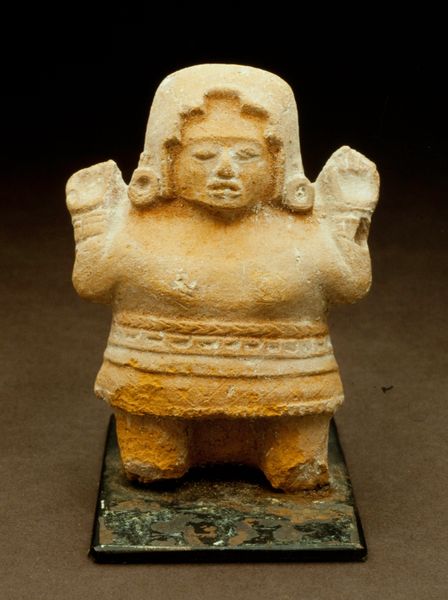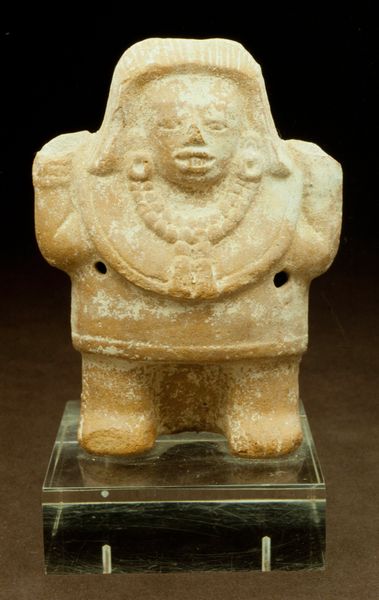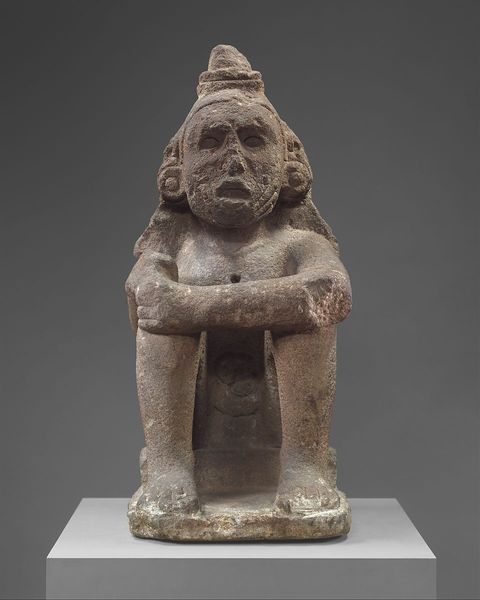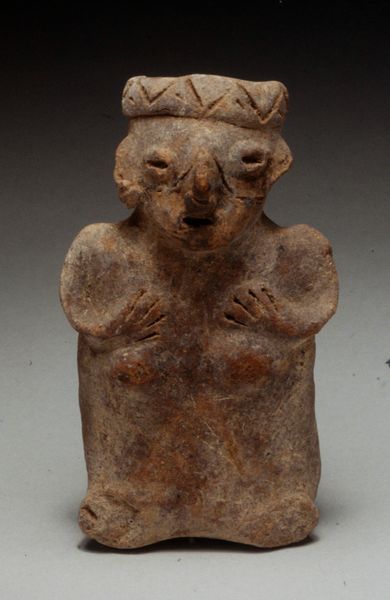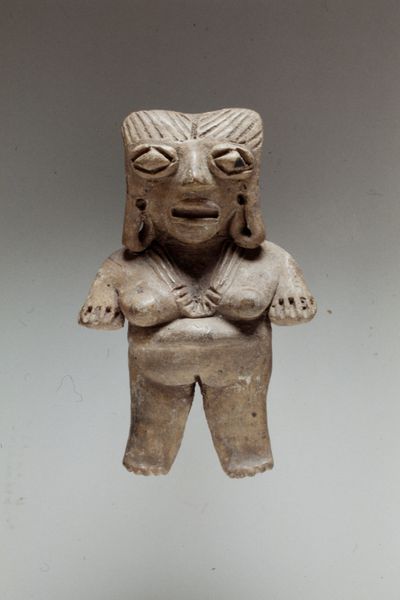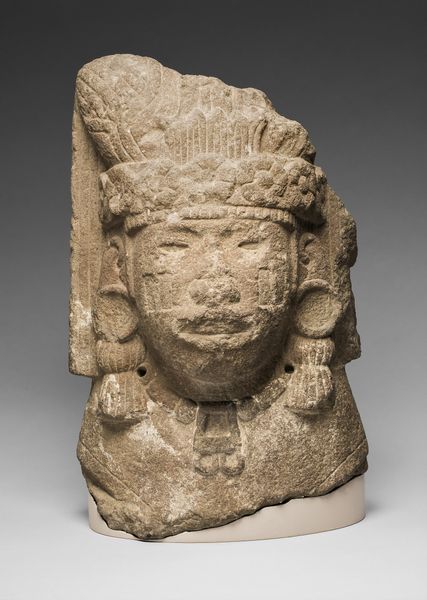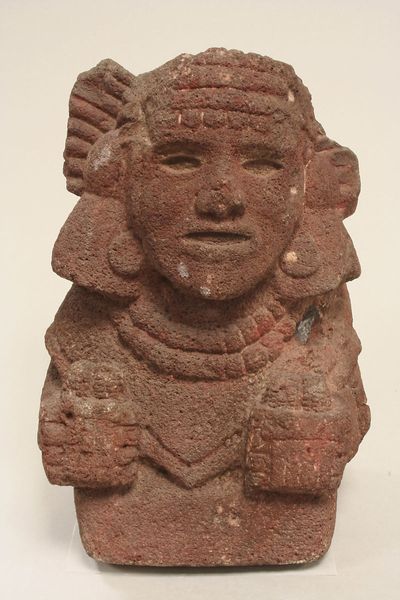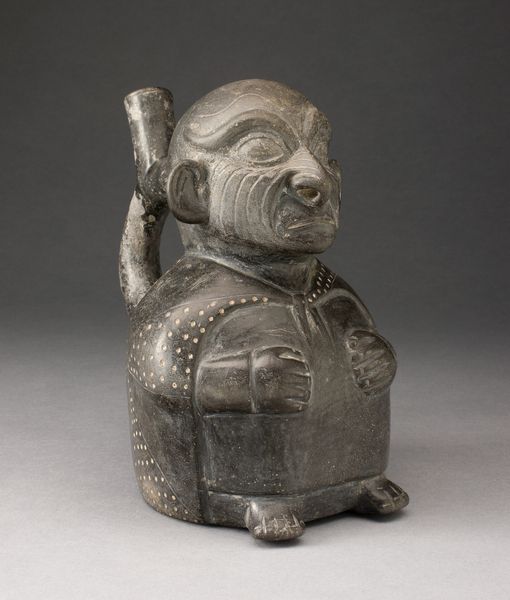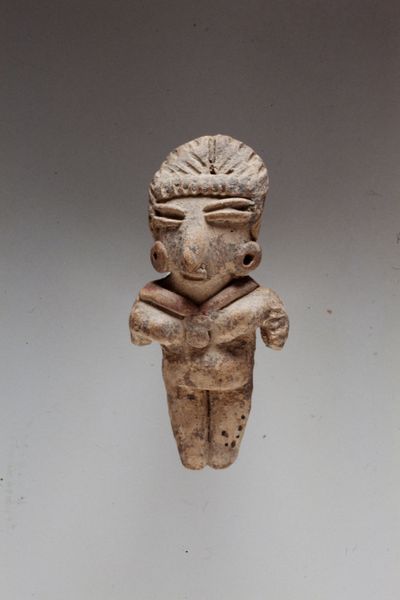
sculpture
#
portrait
#
stone
#
sculpture
#
asian-art
#
figuration
#
sculpture
Dimensions: 19 1/2 × 12 × 10 3/8 in. (49.5 × 30.5 × 26.4 cm)
Copyright: Public Domain
Curator: Looking at this Dvarapala, or Door Guardian, dating from around the 14th or 15th century and currently housed at the Minneapolis Institute of Art, one immediately gets a sense of its imposing presence. Editor: Indeed. The roughhewn texture of the stone and its substantial heft—it practically exudes a feeling of strength and raw power. Curator: Consider how this figure was produced. The anonymous artist likely employed a variety of tools – chisels, perhaps abrasives for polishing, and an intimate understanding of the properties of stone. The act of carving this from raw material, it’s a testament to the skills and labor of the craftsman involved. We often forget that sculptures such as this were integral to the architectural landscape of temples. Editor: Right, and the Dvarapala wasn't just decorative; its role was to guard sacred spaces, warding off malevolent forces. These figures reflect societal beliefs in the spirit world, in the necessity of protection, and the complex visual vocabulary employed in ritual contexts. Was its installation purely a commission or was it also integrated in an organized effort involving several craftspeople from various social classes? Curator: We might think about the cultural institutions that acquired, preserved, and ultimately displayed objects like this. How have tastes changed and influenced our understanding of South East Asian sculptures through colonial collection, institutionalized religion, or later global museum acquisitions? Editor: I think ultimately the success of this piece hinges on how effectively it conveyed a sense of power to its original audience. It served not merely an aesthetic but a political function too. A warning but also a promise of sanctuary. Curator: Absolutely, and reflecting on its place within our modern museum context allows us to continually reconsider its complex layers of meaning. Editor: A potent reminder that art doesn't exist in a vacuum. It is a repository of culture, labour and intent, ready for continual unpacking.
Comments
minneapolisinstituteofart almost 2 years ago
⋮
Throughout the period of Hindu Buddhist civilization in Java (ca. 7th C 15th C CE), both Buddhist and Hindu temples adopted the Indian architectural trope of the guardian figure, which flanked the entrances of temple complexes to protect the power of the inner sanctum and mark the threshold between the sacred and profane. This sculpture of a Dvarapala (Dvara meaning “door” and Pala meaning “protector”) was carved in the round from a soft volcanic stone indigenous to the Indonesian island of Java. In kneeling form (associated with Buddhism) and firmly grasping a club, Dvarapala’s with fierce expressions (i.e. bulging eyes, glaring fangs) became increasingly popular with the rise of tantric (ritual) practices during the rule of the Mahajapidt dynasty (1293 1526) in East Java, resulting in a profusion of forms intended to ward off evil spirits.
Join the conversation
Join millions of artists and users on Artera today and experience the ultimate creative platform.


